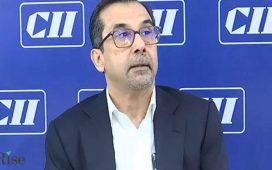In an interaction with ET Online, Pankaj Sharma, EVP, Secure Power Division & Data Center Business, Schneider Electric, says the data centre sector in India is witnessing remarkable expansion, fuelled by the rise of cloud computing, artificial intelligence, and other data-centric applications. This has served as inspiration for the French multinational to expand its operations with a continued focus on expanding India’s data centre ecosystem besides catering to global demand. Edited excerpts:
ET: Could you elaborate on the innovative strategies being implemented by Schneider Electric to minimise the environmental impact of energy-intensive data centres globally?
Pankaj Sharma: The demand for data centres has been there for almost a decade and it’s growing from a global perspective, including India. In fact, it’s even faster in India. There has been a transition from enterprise data centres to cloud data centres, e-commerce, blockchain and metaverse and now AI. With that entire demand and now with AI, the demand for data centres has gone up even more. A global agency on energy consumption, the IEA, talks about how the power consumption at data centres is about 2% at the global level, and is predicted to go to almost 6%. So that’s the level of increase we are expecting.
Now, from a sustainability point of view, even before AI became the buzzword, we’ve always had innovative solutions. We do medium voltage, low voltage, the entire power distribution terrain, etc. We have very simple, but innovative technologies that focus on sustainability. An example would be our UPS systems and the grid compatibility which some of these systems have, which helps in sustainability. In terms of medium voltage switchgear, Schneider Electric uses air instead of gases, which is very important for pushing sustainability. Our EcoCare programme plays a significant role in promoting sustainability by managing heat generation at the rack level in data centres and other critical infrastructure. The programme focuses on optimising the lifecycle management of core technologies in modular data centres, including components like low voltage switchgear, UPS and cooling systems. By employing condition-based maintenance, the programme ensures that equipment operates efficiently, thus reducing unnecessary heat generation and energy use.
We have also introduced numerous innovations around liquid cooling systems, which we aim to produce in this Bangalore facility. Through such measures, we look at solving the sustainability problem.

Pankaj Sharma, EVP, Secure Power Division & Data Center Business, Schneider Electric
ET: What unique selling points does the Bangalore cooling plant have, and how will they impact the country’s data centre ecosystem?
PS: The government focuses on Make in India and Make for the World. We are promoting this too through this plant and also through our R&D push. India is one of our major hubs. We have four hubs across the world and in India, we have almost 37,000 people. We also have over 6,000 engineers. In the past, we have always used India as a key innovation hub, not only to make for India but for the world. From an R&D point of view, we are doing great because we are coming up with new offers and products. We also have a local capability to manufacture it for the local country and also ship to some other parts of the world.ET: What percentage of output from this plant would you be using for global markets and what percentage in the domestic market?
PS: I want this plant to increase its capacity from one gigawatt to three gigawatts. We are looking at India to enjoy the first set of innovations in this domain. Therefore, we would keep 85% for India and the rest 15% for global markets. If the one gigawatt to three gigawatt story has to be a reality, which is also being spoken of by the government, there will be more than enough demand in this country for this plant. Maybe in the future, we will need more of such plants.
ET: How is the broader cooling solutions industry adjusting to the new demand being generated because of AI?
PS: With the exponential growth of artificial intelligence, the demand for data processing is increasing rapidly, leading to an increased demand for cooling solutions. To cater to this growing need, our factory is equipped to manufacture efficient cooling solutions that not only address the cooling requirements of high-density computing environments but also contribute to building resilient and sustainable data centre infrastructure.
At Schneider Electric, we’re working with Nvidia and we have made announcements around the same. Looking at what they have today in terms of their GPUs and what is coming up in the future, we are working with them and doing a full design of the data centre, which is called a reference architecture. So we’ve worked with them in the past few months and we’ve built some reference architectures, which they are now taking and giving it to their customers. When we look at the sustainability equation, it cannot be solved by doing work only on the physical layer. There is a huge demand for data centres which will go from one gigawatt to a much higher level in the next 5-7 years.
ET: What are your thoughts on the country’s innovation ecosystem and its ease of doing business?
PS: India is one of our major innovation hubs. We foresee continuous demand for our services in the country. The Indian government is launching various programmes requiring our products. In terms of technology, India is doing great. There are various examples of technology where we can learn from each other. Let me give you an example: our SMT line is a power electronics line in a manufacturing facility, and it’s something the world can learn from. Such hubs will continue to evolve and collaborate with one another.







